Mackintosh's Hill House reopens inside a box
- Published
It's hoped the "box" will act as a giant shield covering the entire building.
Charles Rennie Mackintosh's domestic masterpiece is to reopen to the public after work to enclose it in a "box" to protect it from the elements.
Hill House in Helensburgh was said to have been seriously deteriorating inside and out because of the effects of a century of driving rain and wind.
Its owners, The National Trust for Scotland, have spent five months enclosing it in a protective cage.
They said it was an "innovative solution" to saving the building.
Public access to the building will begin again on Saturday 8 June.
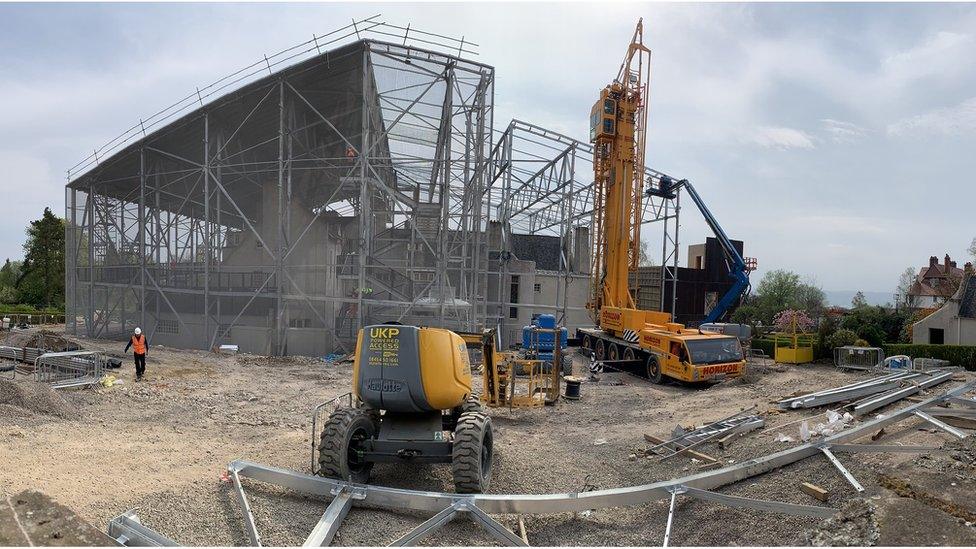
It has taken five months to built the box around the house

A walkway allows visitors to see the renovation work
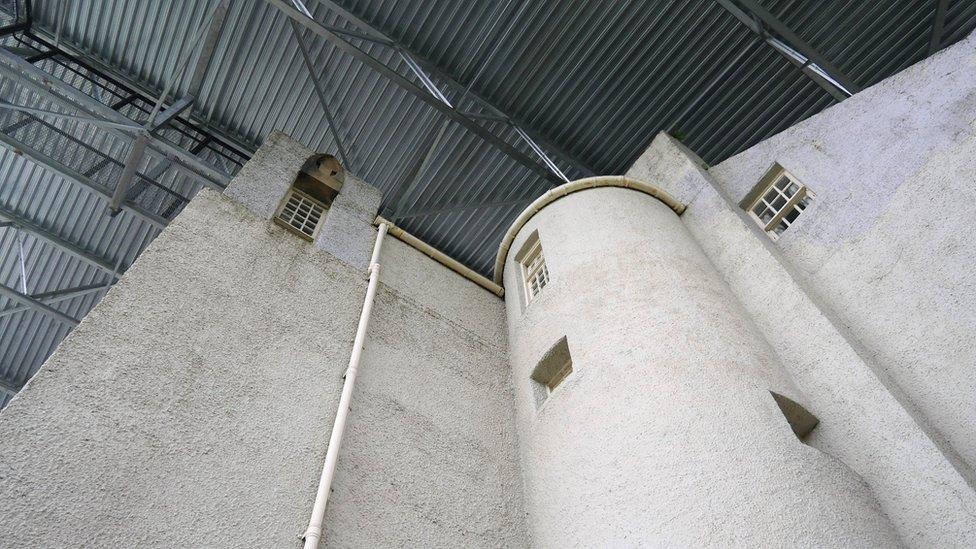
The roof is made of steel to protect the house from rain
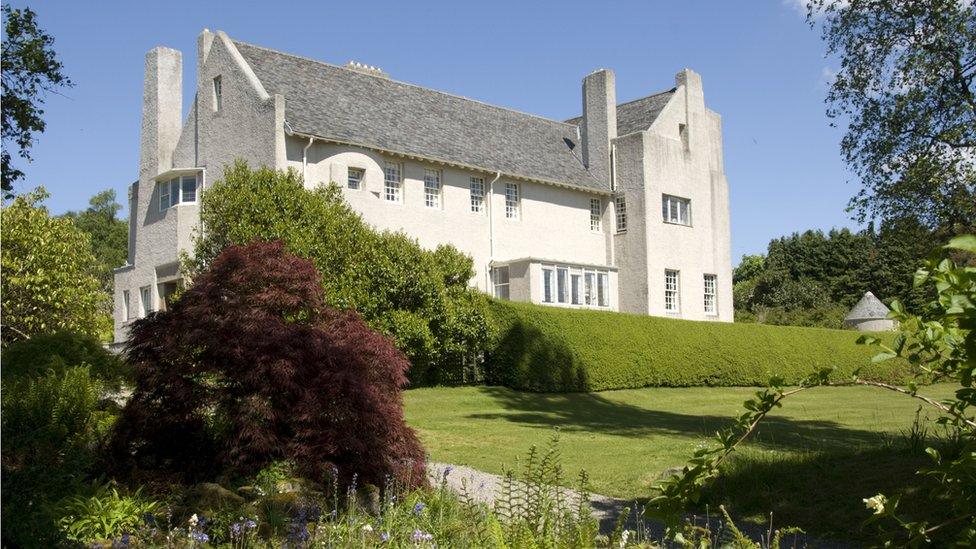
The Hill House was completed in 1904
The Hill House was built by Mackintosh for Glasgow publisher Walter Blackie and completed in 1904.
It is the famous architect's most complete example of a domestic home, with Mackintosh having had a hand in the design of every aspect of the building and its fittings.
It was built as "a home for the future", however, Mackintosh's experimental design and the use of new materials meant it was showing signs of serious deterioration.
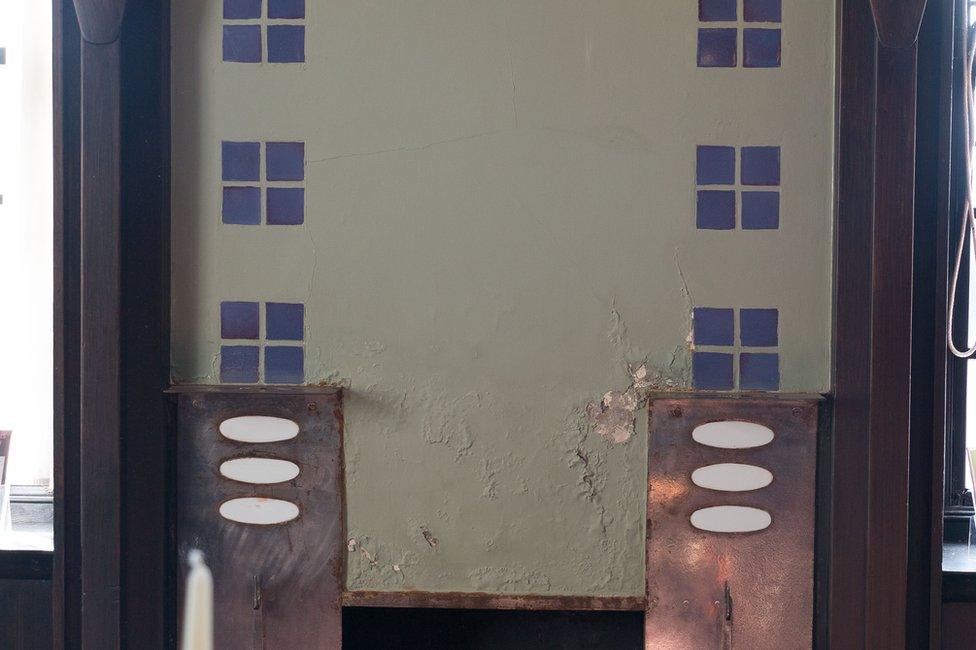
The water damage was affecting the inside of the house
The use of Portland cement in the building's render allowed water to penetrate the sandstone and further rain and wind have saturated the walls of the house, threatening its survival.
Its owners hope the "box" will act as a giant shield covering the entire building.
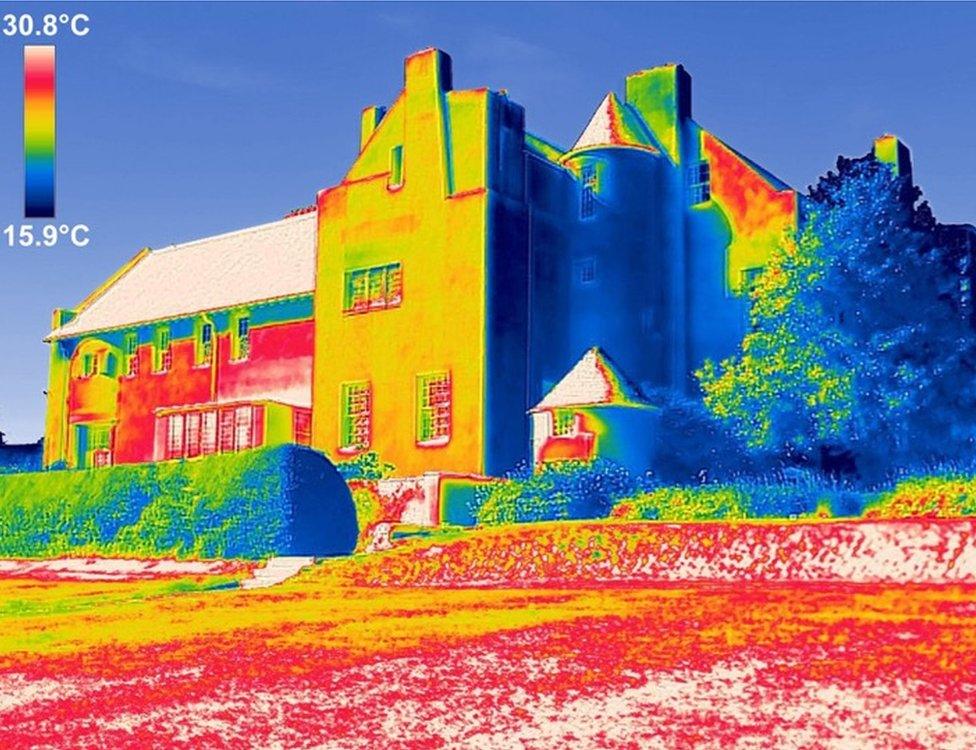
Infra-red thermographic images show the extent of damp and water damage
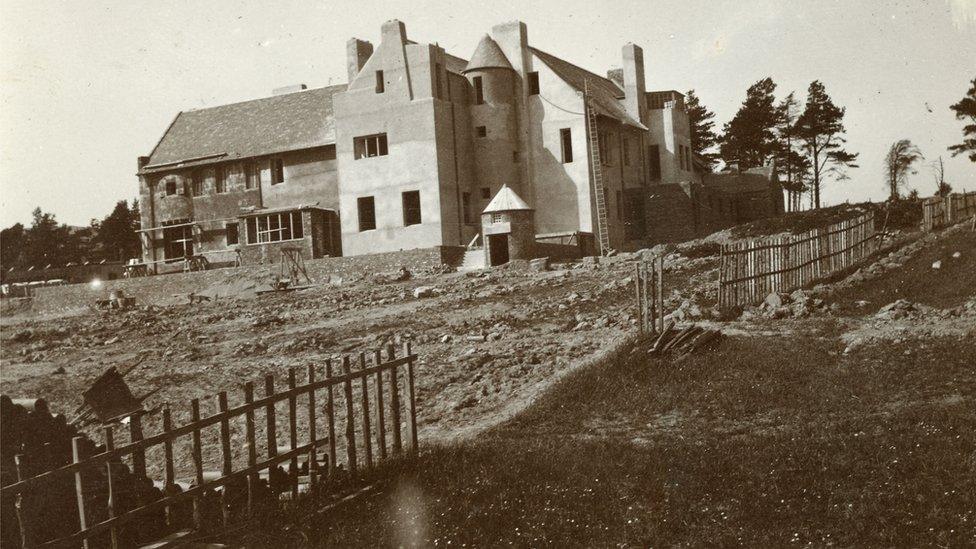
The building was an experimental design
It is a semi-transparent shelter, consisting of a steel roof and a frame encased in chainmail.
It is designed to allow the garden within the box to continue to grow and for the building to remain visible.
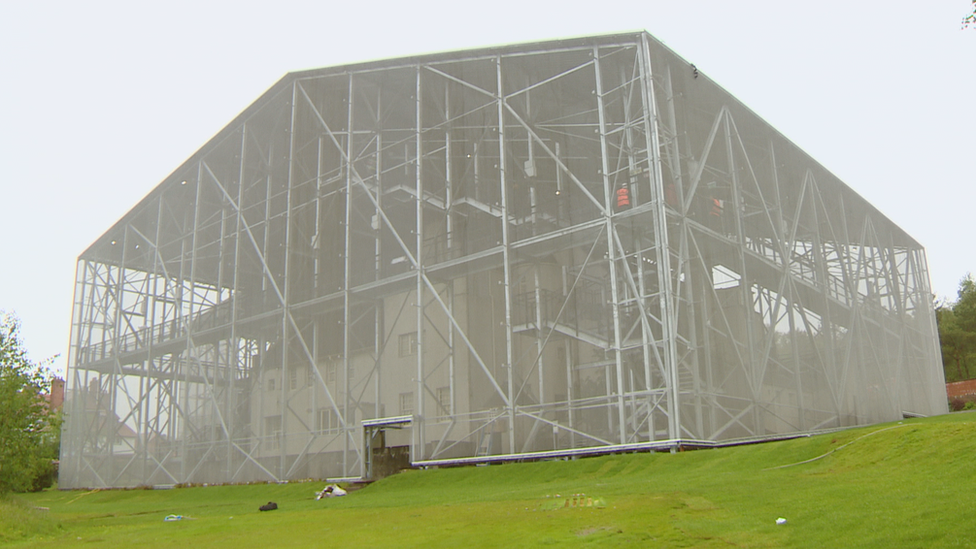
The box should protect the house from about 87% of the rain but still allow it to "breathe"
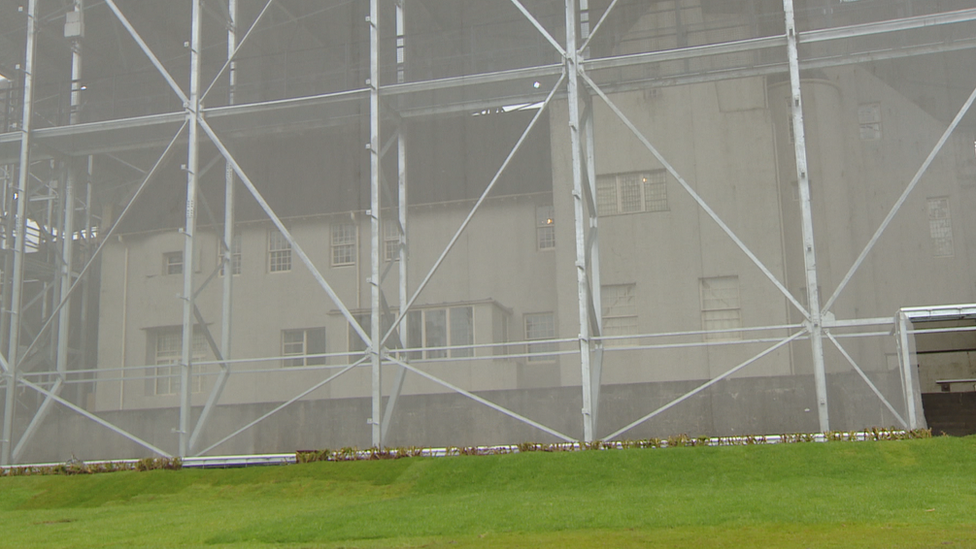
The house is still visible through the chainmail box
The aim is for the box to allow about 13% of rain to reach the house, allowing it to dry out naturally.
It may take up to three years for the house to dry out fully before conservation work can begin in earnest.
This means the Hill House Box may have to stay in place for between seven and 10 years.
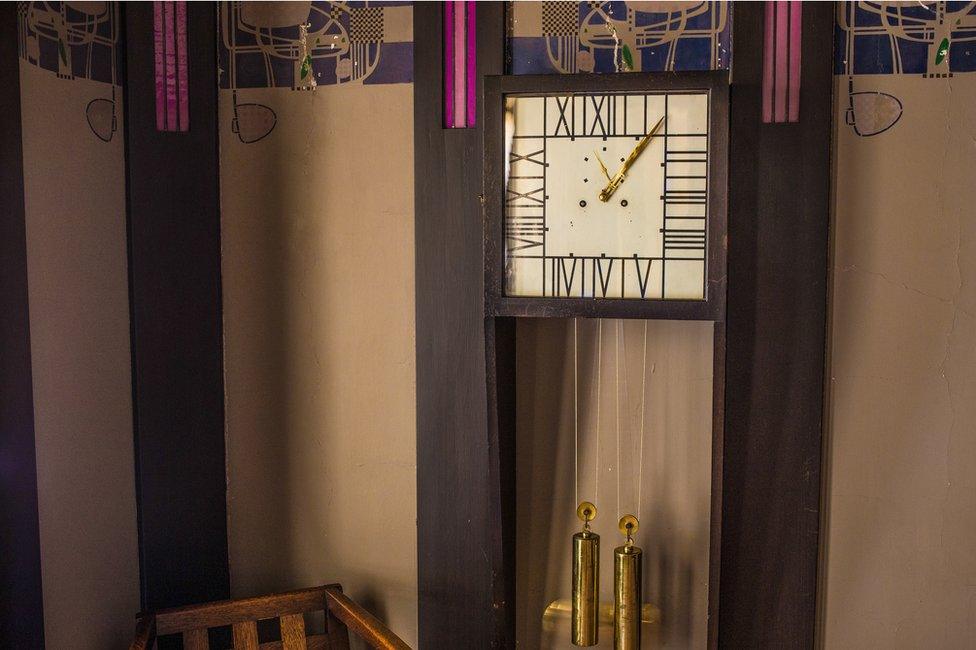
The house includes many priceless Mackintosh designs

Mackintosh designed every aspect of the house
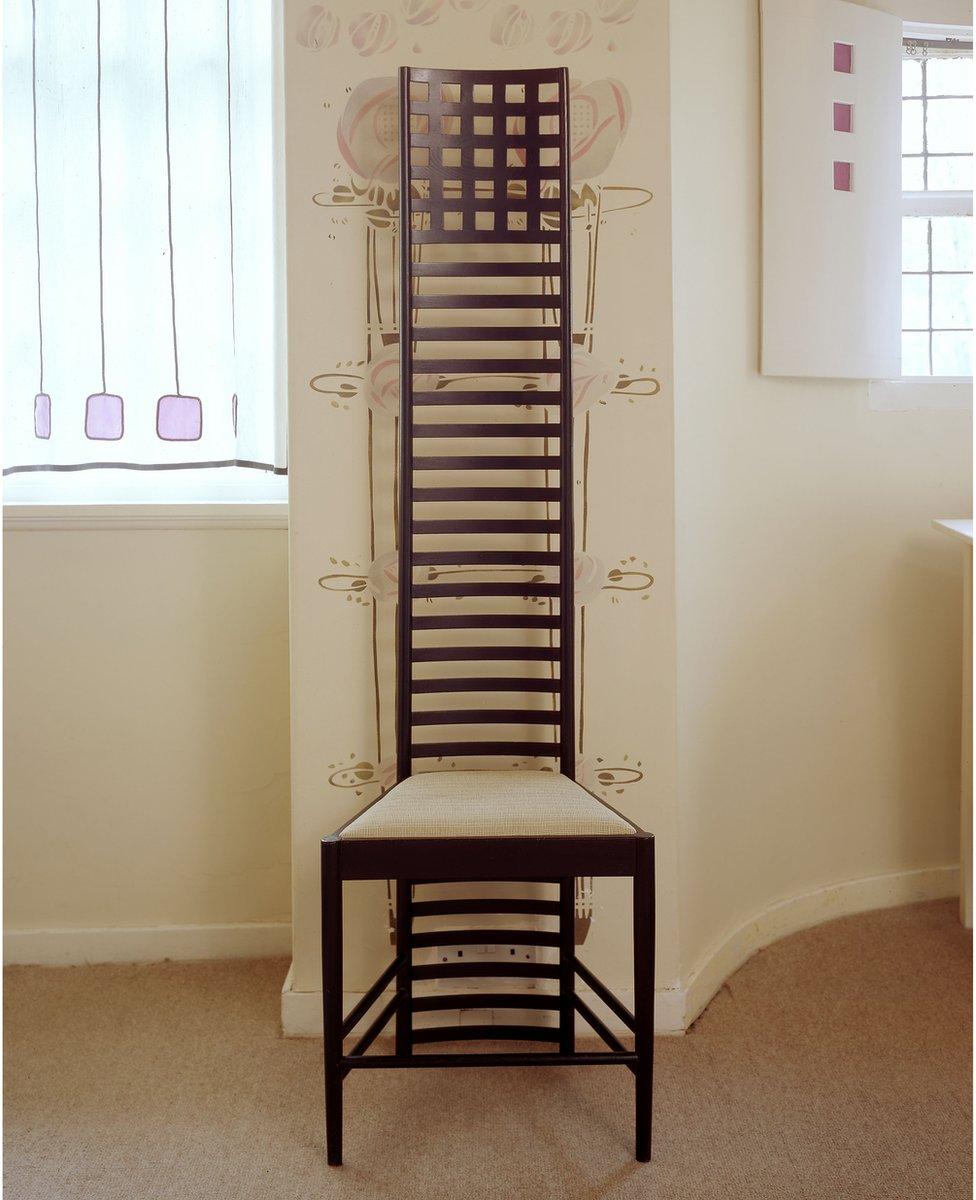
Mackintosh's famous high-backed chairs are part of the Hill House collection

Both the interior of the house and the box will be accessible to the public, who will be able to watch conservators at work.
The design includes several walkways around the upper levels and over the roof, which was not possible before.
The trust has also built a new café and visitor centre.
The total cost of the project is expected to be about £4.5m.
- Published5 July 2018
